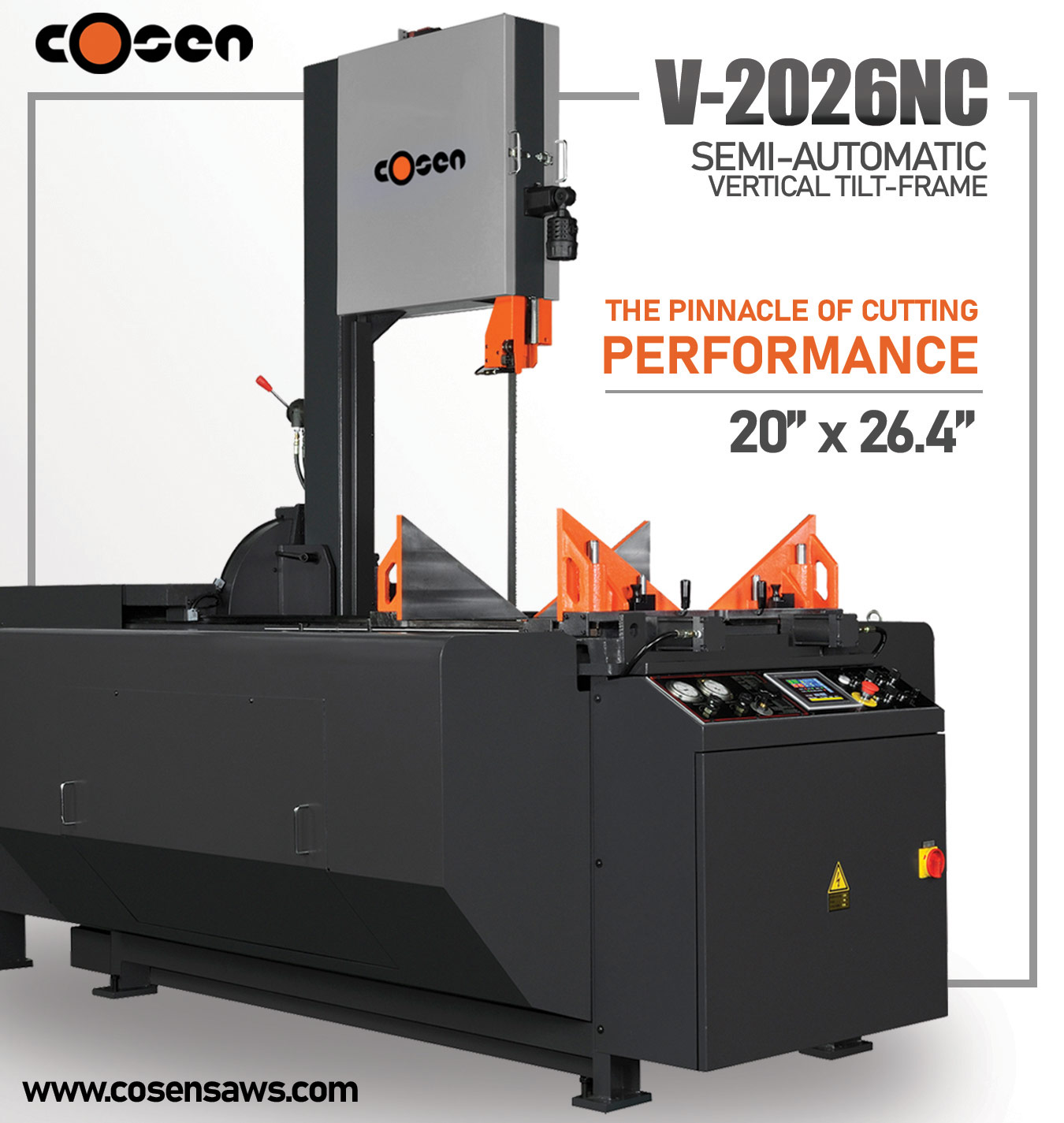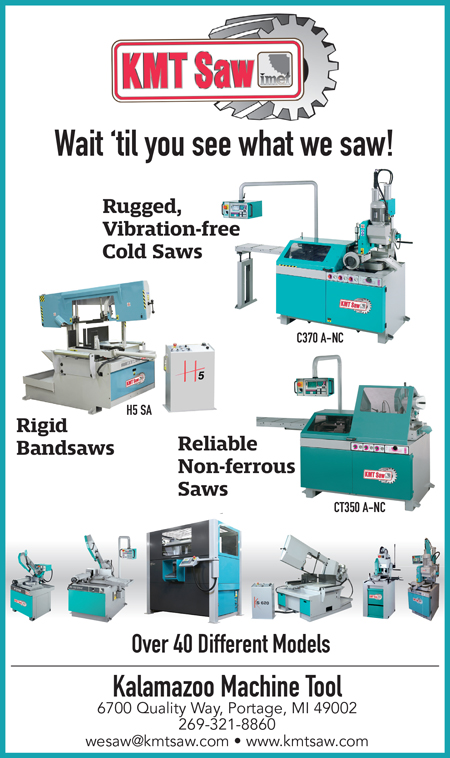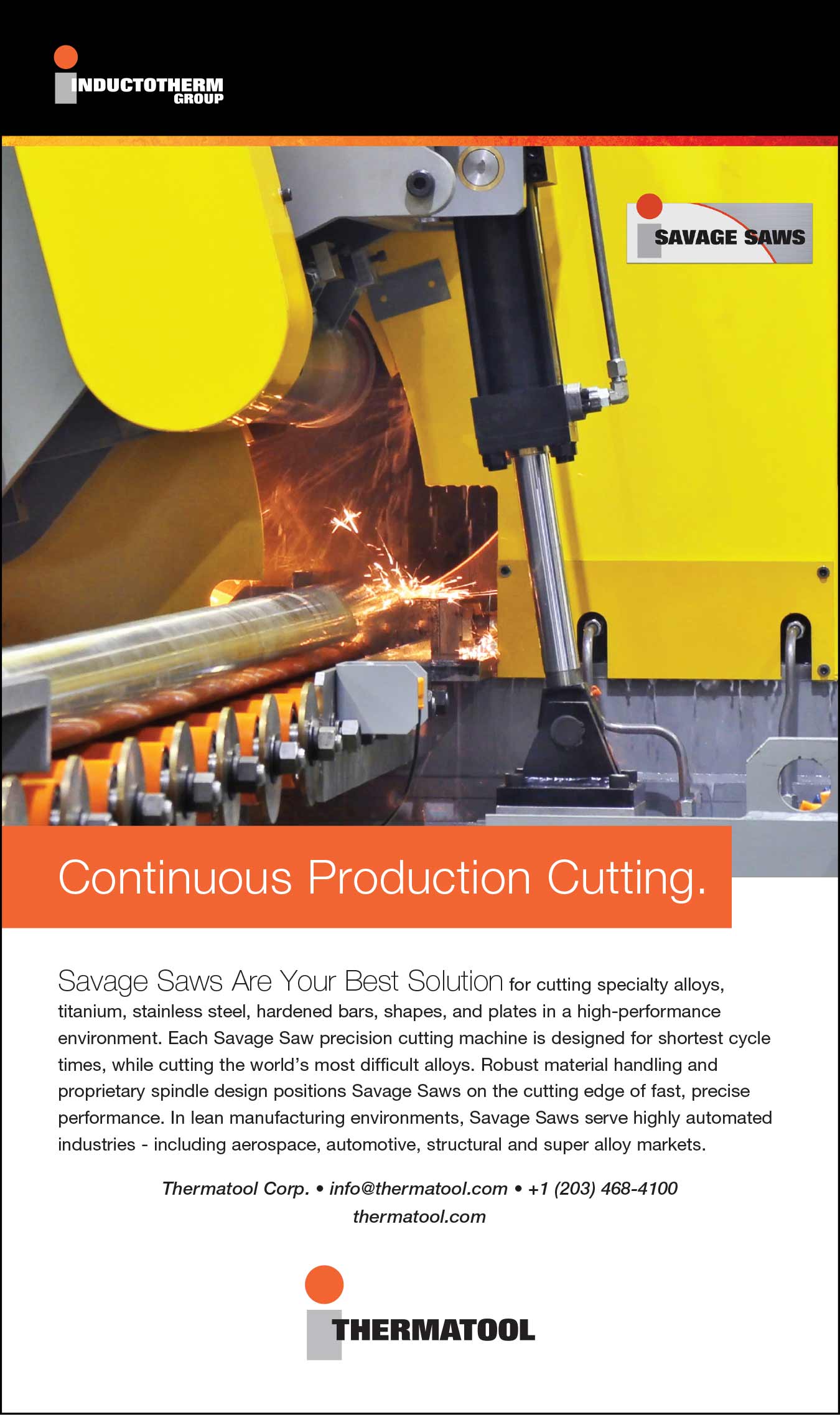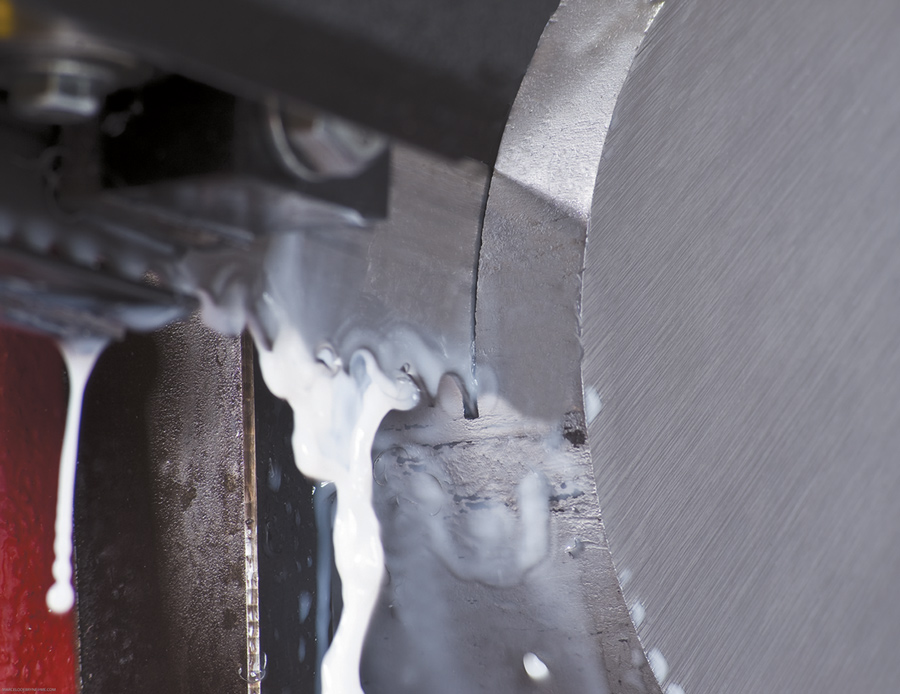
ervice centers and fabricators that are serious about getting the greatest-quality cuts and efficient output from their sawing operations can access a plethora of tactical resources from their vendors, including from the makers and distributors of saw blades.
Jay K. Gordon, North American product manager for sawing and hand tools at The L.S. Starrett Co., explains why everything from YouTube tutorials to tension setting will help sawing operators achieve their goals.
For over 140 years, Starrett has made a wide range of precision measuring tools/gauges, metrology equipment and saw blades for metals applications and more. The company published a speed-and-feed guide online for bandsaws. “You just point the arrows and get results,” says Gordon.
The company is currently updating its online calculator, with which users can punch in variables, such as type of materials, thicknesses and diameters and more, and the calculator will make recommendations on how to optimize sawing those materials. There is also an app in the works to do this on mobile platforms.
Now, with all the COVID-19 related issues, Starrett, its distributors and customers often use GoToMeeting and Zoom calls to facilitate and obtain support. “We are doing a lot [virtually] to keep people up to date. Virtual meetings are available for one-on-one chats between a product specialist and customer. We can talk about technical issues,” Gordon says.
“The more information we can put in people’s hands, no matter the method, the better off we all are,” Gordon says. “We also encourage in-person meetings, which surely will increase again as the pandemic subsides.”

“You can use a handheld gauge to assess the blade tension. If the blade is loose, tighten it up by hand or mechanically. Then test it again.” Some customers may use a hydraulic gauge that shows pressure, from which they can calculate tension.
“You can also have a negative effect on the machine itself, including wear and tear. No matter the machine manufacturer, the blade should be tensioned properly for the machine and for the material being cut.”
“At one point, straight cutting oil was a viable solution. But there are EPA issues and fire hazards to consider, so most shops don’t use that anymore. Synthetic and semi-synthetic oils won’t spoil as quickly. They offer a good amount of cooling and lubrication properties,” Gordon says.
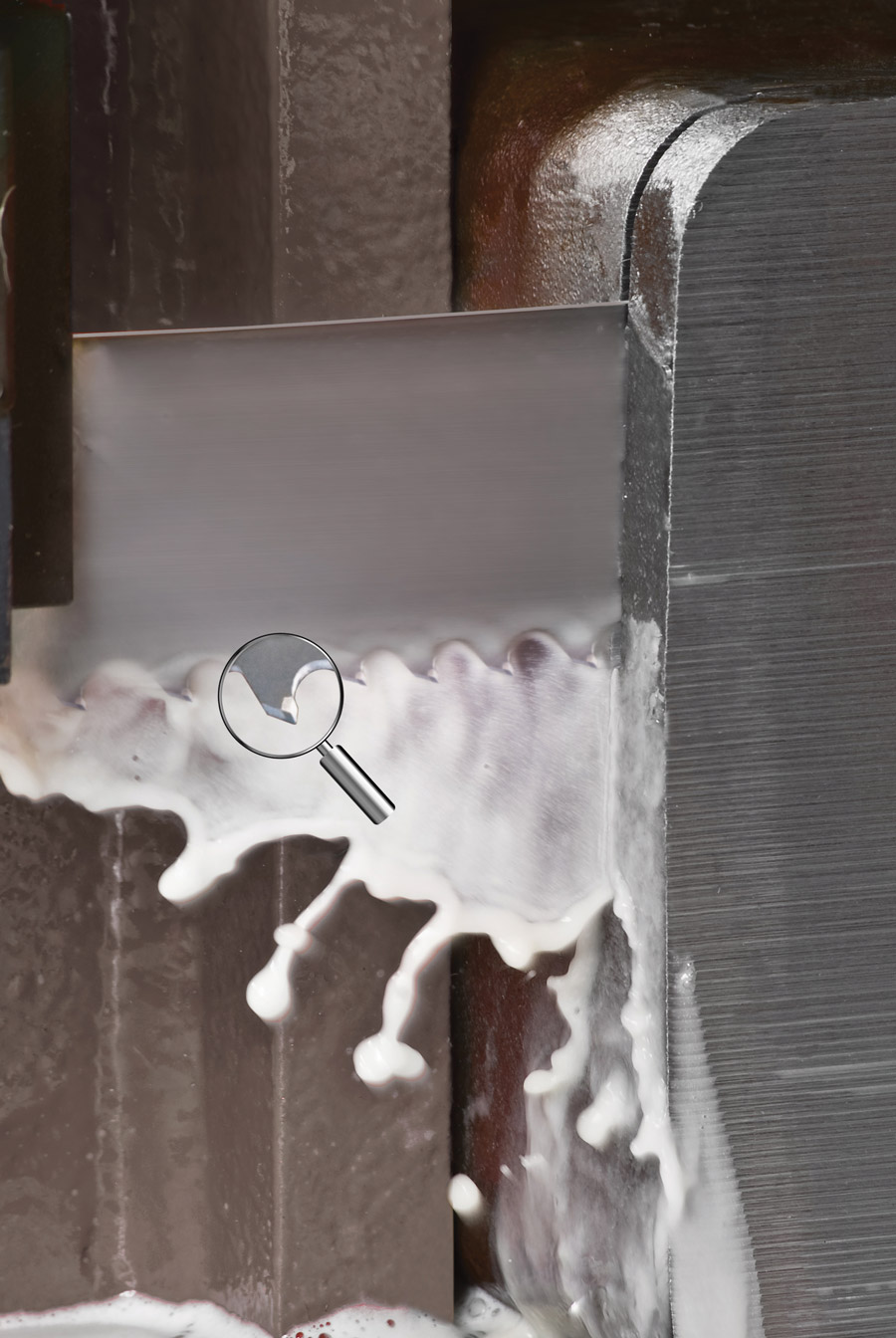
Users should just follow labeled instructions when mixing. “You don’t want to have oil and water separate. Avoiding separation is important. Cleanliness is important, too. Manufacturers generally recommend changing the coolant at least once a year based on an 8- or 10-hour day, more often with a two-shift operation. This is a forgotten part of sawing production. People throw it in and turn a crank, but it cannot be neglected,” Gordon says.
“The cause is usually a combination of heat and pressure,” says Gordon. “If you don’t have lubrication, the tooth and chip are so hot that they spot weld together.
“Every blade manufacturer strives to make the gullets and tooth shapes just right,” he says. “The minute a chip is welded to the blade, the design of the blade has been changed.”
 if you back off on feed rate and pressure, the blade works less hard and hones the tooth.
if you back off on feed rate and pressure, the blade works less hard and hones the tooth. 
Chip brushes are designed to take chips out of the gullet, but only loose chips. They are not designed to get welded chips out.
Most saws run one of two types of brushes: a steel wire wheel, or a polymer wheel (nylon). “The polymer doesn’t load up with chips but sometimes the steel wire will. However, the steel wheel typically cleans the gullet better. By maintaining each wheel type, the wear is reduced,” says Gordon.
Over time, however, “a 3-inch wheel becomes a 2 3/4 inch wheel that is barely touching the blade, so operators have to be aware of that.”
The main thing is to turn to the blade manufacturer or distributor as a ready resource and keep on top of the tasks that will keep the sawing operation running in a highly productive manner.

